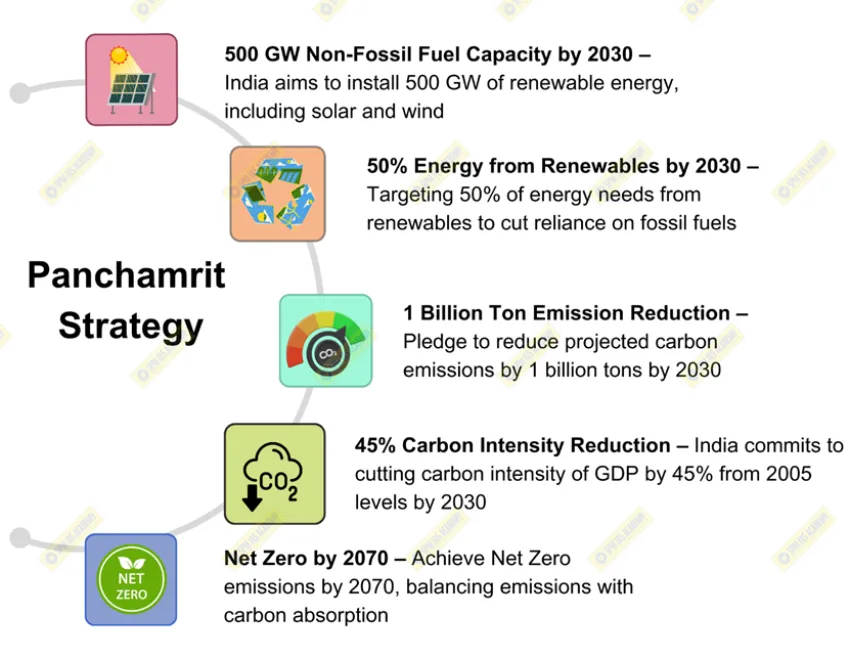Net Zero Emissions aims to balance the amount of greenhouse gases (GHGs) emitted with the amount removed from the atmosphere, achieving a neutral impact on global warming. This goal is crucial for limiting global temperature rise to 1.5°C above pre-industrial levels, as per the Paris Agreement. By achieving net zero, countries contribute to climate stability, protecting ecosystems and promoting sustainable economic growth.
Steps India Should Take to Achieve Net Zero Emissions by 2050
1. Steps India Should Take to Achieve Net Zero Emissions by 2050
Increase reliance on solar, wind, and hydropower to reach 500 GW of renewable capacity by 2030, aligning with India’s current targets. This transition would cut dependence on fossil fuels and reduce carbon emissions significantly.
2. Decarbonize Transportation
Promote electric vehicles (EVs), aiming for 30% EV adoption by 2030. Investment in public transportation and incentives for EV infrastructure are essential to reduce emissions in urban areas.
3. Adopt Green Hydrogen for Industry
Invest in green hydrogen as a clean alternative for high-emission industries like steel and cement. The National Green Hydrogen Mission targets the production of 5 million tons of green hydrogen annually by 2030.
4. Enhance Carbon Capture and Storage (CCS)
Develop CCS technologies to capture emissions from coal and industrial plants. This could be coupled with bioenergy with carbon capture (BECCS) to actively remove CO₂ from the atmosphere.
5. Afforestation and Biodiversity Conservation
Implement extensive afforestation programs to increase India’s carbon sink. Initiatives like the Green India Mission should be scaled to restore degraded ecosystems and increase forest cover.
6. Promote Energy Efficiency in Buildings and Industry
Mandate green building codes and energy-efficient standards in construction and manufacturing. The Perform, Achieve and Trade (PAT) scheme can be expanded to incentivize energy savings.
7. Enhance Waste Management and Circular Economy Practices
Improve waste segregation, recycling, and bio-waste management to reduce methane emissions from landfills. Encourage circular economy practices across industries to minimize waste generation.
Achieving Net Zero by 2050 requires India to commit to sustainable, cross-sectoral changes. With focused action in renewables, transportation, industry, carbon capture, and ecosystem restoration, India can transition towards a low-carbon future, aligning with global climate goals while fostering economic growth and energy security.












